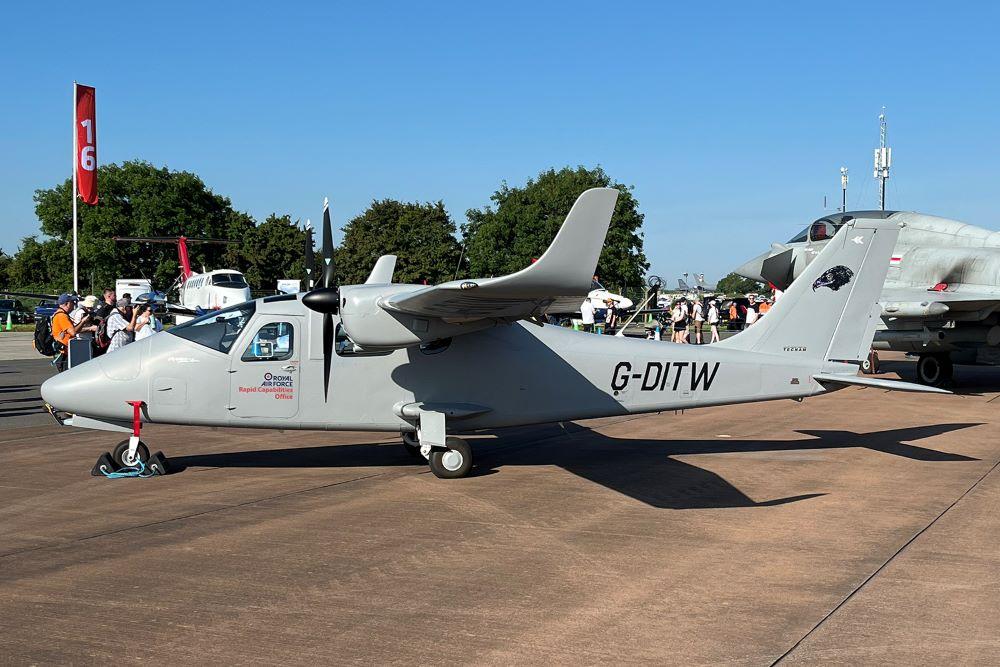
RAF FAIRFORD, England—The UK Royal Air Force’s Rapid Capability Office (RCO) has acquired its own flight test asset to trial new capabilities and technologies.
The twin-engine civilian-registered aluminum airframe Tecnam P2006T has been purchased in an intelligence, surveillance, reconnaissance (ISR) configuration, so it features several apertures and harnesses for the fitment of sensors that will support the RCO’s flight testing and experiments.
“This aircraft is a very efficient way to bring capability into the Royal Air Force,” Group Capt. Peter Hackett, the RAF RCO’s chief test pilot ,tells Aviation Week at the Royal International Air Tattoo here. Rather than formal test and evaluation operations, the focus is on flight testing “nascent technologies,” Hackett says. Having an in-house flight-testing capability in the RCO is cheaper than fielding the work out to companies and is “more reactive” to current events, Hackett says.
“It is our asset, and we can wake up one morning, decide what the priorities are. If we get some new guidance, we can move on it really quickly,” he says.
After making its debut at the Air Tattoo, the first immediate task for the aircraft will be to become “the physical instantiation” of a digital twin, says Hackett, as part of a wider UK government project to explore digital twins and their potential benefits for UK defense and the government.
“We’ll start the digital twin process with the equipment that goes in it but we’re going to expand it to include the whole airplane, the engines, how their plane flies, its maintenance schedule, its flying program,” Hackett explains. Other projects to be flight tested include new novel communication and data links and new alternative forms of navigation.
“Testing on the ground is hugely valuable, but inevitably there are things you find out when you get in God’s wind tunnel in the sky that you didn’t anticipate,” Hackett explains.
Work is also continuing on the RCO’s Project Monet to look at environmentally friendly technologies that could support the development of a future ab-initio training aircraft. The RCO is currently supporting the building of two prototype aircraft. One is the Swift two-seat light aircraft. The Swift will initially feature a conventional internal combustion engine but will later be fitted with an electric motor. Studies have also been done on a direct-burn hydrogen engine, but this is not being proceeded with for now.
The second aircraft, an FLS Sprint, is being modified by a consortium of Babcock and CFS Aero and fitted with a Rotax engine that could be hybridized and use synthetic fuel.
Both are due to fly before year’s end and the RCO will perform a formal assessment of both the aircraft and their life cycle, providing what Hackett called a “thick dossier of data” that the RAF will use to make a decision on Project Telum, which will deliver a future sustainably powered training aircraft that would replace the Grob G115 Tutor aircraft that are currently used for pre-service flying training, grading and assessment, as well as support the RAF’s University Air Squadrons and Air Experience Flights.
“Ukraine is bringing a renewed focus to rapid acquisition ... the Rapid Capabilities Office is really focused on getting capability to the front line as quickly as it can,” Hackett explains.





